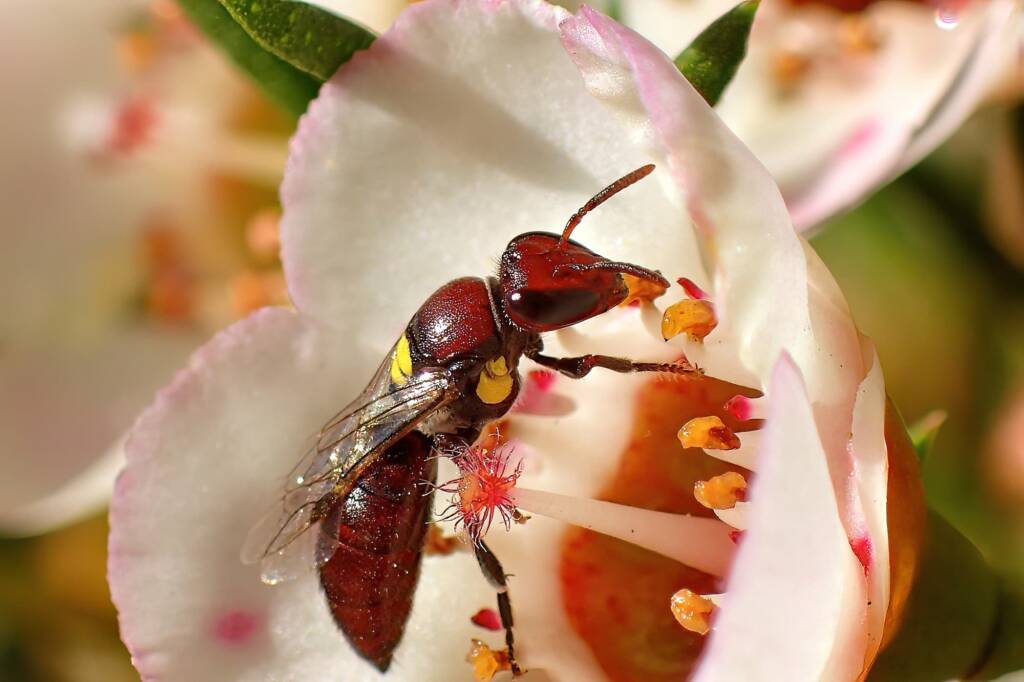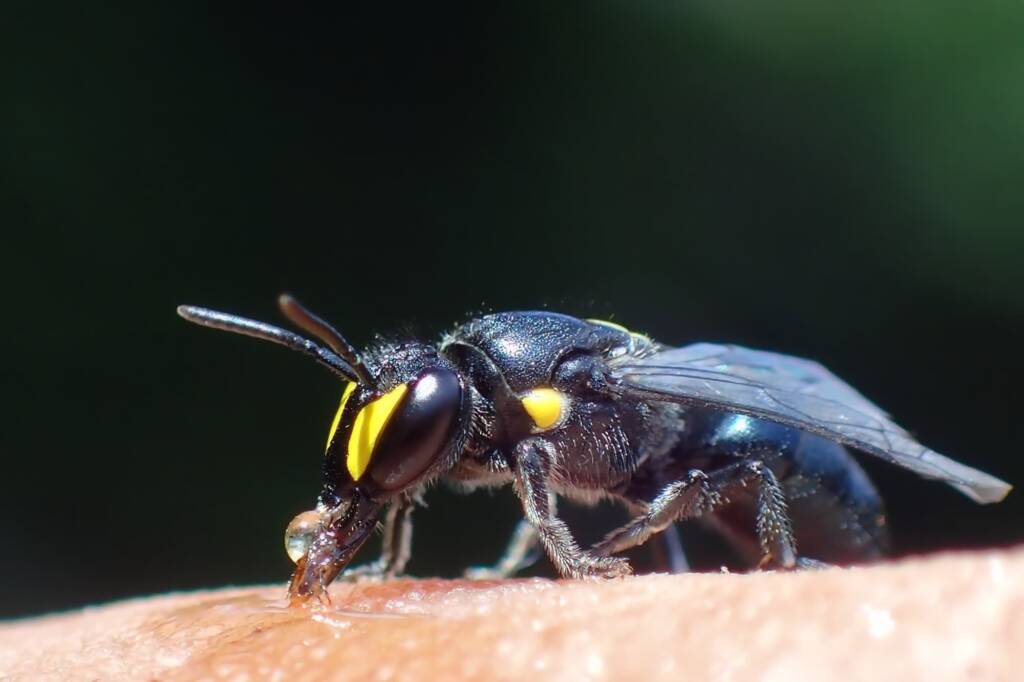Euryglossinae and Hylaeinae
Author Gary Taylor ◦
I gotta admit I’m a bit of a fan of our lesser noticed (but often more exquisite) little native bees, particularly Euryglossinae and Hylaeinae.
Ok, quick run down here, bare with me, I’ll try to make this as painless as possible…
In Australia we have 5 of the 7, worldwide major Families of native bees, each Family is divided into a small number of sub families then into Genus (and sub genus in many cases) and then into species, giving us around 2,000 all up. Euryglossinae and Hylaeinae are both sub families in the major (and largest) family Colletidae. The other families in order of size are Halictidae (some names you might recognise in this family, Lipotriches, Homalictus, Lasioglossum, Nomia…), Apidae (that has your Amegilla or BBB’s, carpenter bees, the Thyreus cuckoo bees, Tetragonulla, aka “stingless bees”…), and Megachilidae (includes the leafcutter and resin bees). Of course when we talk about “stingless bees”, out of the 2,000 odd species of native bees, only 11 are stingless.
Then there is the Stenotritidae the smallest of the 5 families, with the smallest number of species. There are so many hundreds of different species within these two sub-families alone that I still find new ones on a fairly regular basis. But they can be so similar looking, particularly the really small ones (the worlds smallest bee, 2mm long, Quasihesma, that are only found here in Australia and another bucket list shot, belongs to the Euryglossinae family), that it can be really hard to distinguish between them without ultra close inspection. But one of the ways (as pointed out by Megan) is the location of the antennae…
So we know that the antennae can determine a family and is one of the distinguishing factors in identifying Stenotritidae is that their first antennae segment is longer than the scape… in Euryglossinae they are well below the midpoint of the eye, as seen in the first two pics (you may need to click on the pic to see where the antennae socket is).


Whereas in Hylaeine bees (the next 3 pics) the antennae are located higher up.

3rd pic is Hylaeus elegans, 4th pic, Rhodohylaeus, is a good chance to expand a bit on the sub-family thing… The four major families (Stenotritidae doesn’t count here) all have two or three sub-families and each of those has a bunch of genera (genus’s). But often an individual genus will then have a bunch of sub-genera, each with it’s own bunch of species attached… So, if I haven’t lost you, the 4th pic is a species of Rhodohylaeus, which is a sub-genus of the genus Hylaeus, in the sub-family Hylaeinae, of the family Colletidae…

And 5th pic is from another genus in the Hylaeinae family, Merroglossa, this one’s rubricata.

In all three you can see the antennae sockets are located at or above the midpoint of the eye (I’ll chuck a couple more pics in to show).

WARNING! Science jargon coming up… It’s ok to stop reading now… 😅 The other ways to distinguish between the two sub-families are firstly whether the supraclypeal area (the little bit between the antennae) raises abruptly above the height of the antennae sockets, indicating Hylaeine or if it’s gradual and smooth (as seen in the second pic) indicating Euryglossinae.
Secondly the absence or presence (and if so, the shape) of the pygidial plate, which requires a really good bum shot, and also if theres’s a longitudinal median groove or ridge on the front surface of T1, which you can never see ‘cos the wings nearly always cover it. But I think we’ll leave that for another day… 😄

Footnote & References
- Euryglossinae and Hylaeinae, by Gary Taylor, 1 January 2021, Bee Aware of Your Native Bees (Australia), Facebook
- Megan Halcroft, Admin of Bee Aware of Your Native Bees (Australia), Facebook
